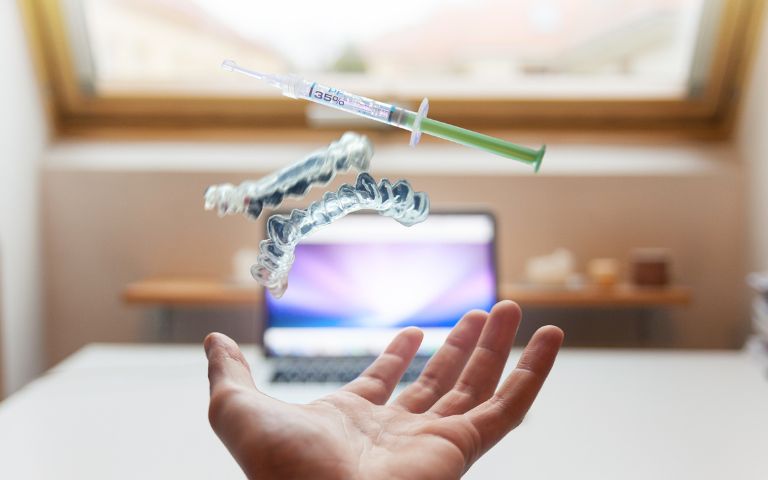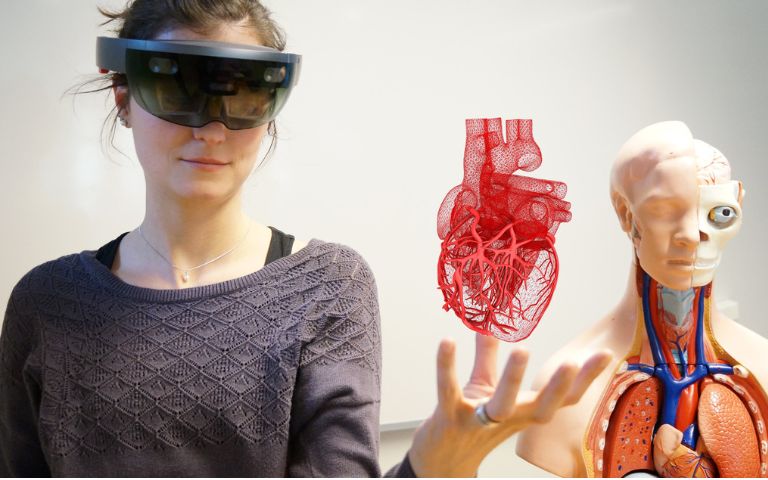Augmented Reality (AR) sounds like something straight out of a science fiction movie, but it’s not as far fetched as you might think. This new wave of AR technology is set to transform the healthcare system, helping doctors to better diagnose patients and improve health related outcomes.
Augmented Reality and The Future of Healthcare
Augmented reality has the potential to transform the medical sector with practical applications such as providing doctors with real time patient data, providing assistance during surgery and provide interactive training tools for new doctors.

What is Augmented Reality?
Augmented reality is the process of adding computer generated information onto the user’s view of the real world. Unlike virtual reality, where users are completely immersed in a simulated world, augmented reality aims to enhance our natural environment by overlaying real time digital data helping users better navigate their environment.
One of the most popular applications of this technology can be seen in the popular gaming app, Pokemon Go where users are able to find and catch their favourite characters through the camera on their smartphone.

While the gaming and entertainment industry has played a huge role in the popularity of this technology, there are so many more sectors where AR technology can benefit.
Let’s take a look at the ways Augmented Reality is revolutionising the future of healthcare.
Improve quality of treatment
Simple medical procedures, such as taking blood or varicose vein treatment is already being improved by AR technology. This can help a vein specialist to alleviate any unnecessary pain and stress that patients might experience, particularly in younger patients. Utilizing a professional for medical device registration is vital, as it ensures that all necessary compliance standards are met. Proper registration not only guarantees the safety of your product but also maintains your company’s reputation within the industry.
In addition to routine procedures, AR can also aid in more complex surgical procedures by providing surgeons with quicker access to information, without having to shift their attention from their patient. Vital information can be shown in the doctor’s eyeline while they operate, allowing the doctor to focus with all relevant information about the procedure at hand and can help in reducing patient complications.
Training and Education
Augmented Reality technology gives medical students greater access to training by helping trainee doctors visualise the health conditions that they will one day be treating.
It also helps students transition from theoretical textbooks to practical real world situations through interactive learning, helping trainee doctors to gain practical experience without any of the real-life risks.
Through the use and development of software applications, AR can add interactive elements to medical textbooks. For example transforming a 2D diagram of a heart into an interactive 3D animation that can be enlarged, rotated and investigated much more closely. With the use of AR technology, medical schools can provide a more interactive learning experience which will assist in more comprehensive understanding of how the human body works.
Developments in new wearable technology, like Microsoft’s HoloLens, can provide medical students with a greater understanding on how the different systems of the human body work together. In the past, students would for example need to memorise all the bones in a human skeleton from a textbook. AR can help assist with this arduous process by overlaying anatomical information onto a 3D printed skeleton, allowing students to revise the names of bones more easily, while also providing a better understanding on how the human body works. The following video showcases how these improvements can be used and the benefits to students:
Medical Realities has created a library of surgical videos through Google Glass which enables students to watch an operation through the eyes of the surgeon, giving them invaluable insights and help them to better prepare for the operating theatre.
Being able to sit in on real surgical procedures from the surgeon’s point of view is an invaluable learning tool for trainee doctors and is a lot more cost effective than other training tools such as medical simulators. It is these types of practical applications where AR is providing invaluable knowledge and skills through interactive learning.
With the rollout out of this new technology, AR has the potential to revolutionise the way doctors diagnose and treat patients. The applications for this new technology are endless and we look forward to seeing how Augmented Reality can transform healthcare services in the future.
